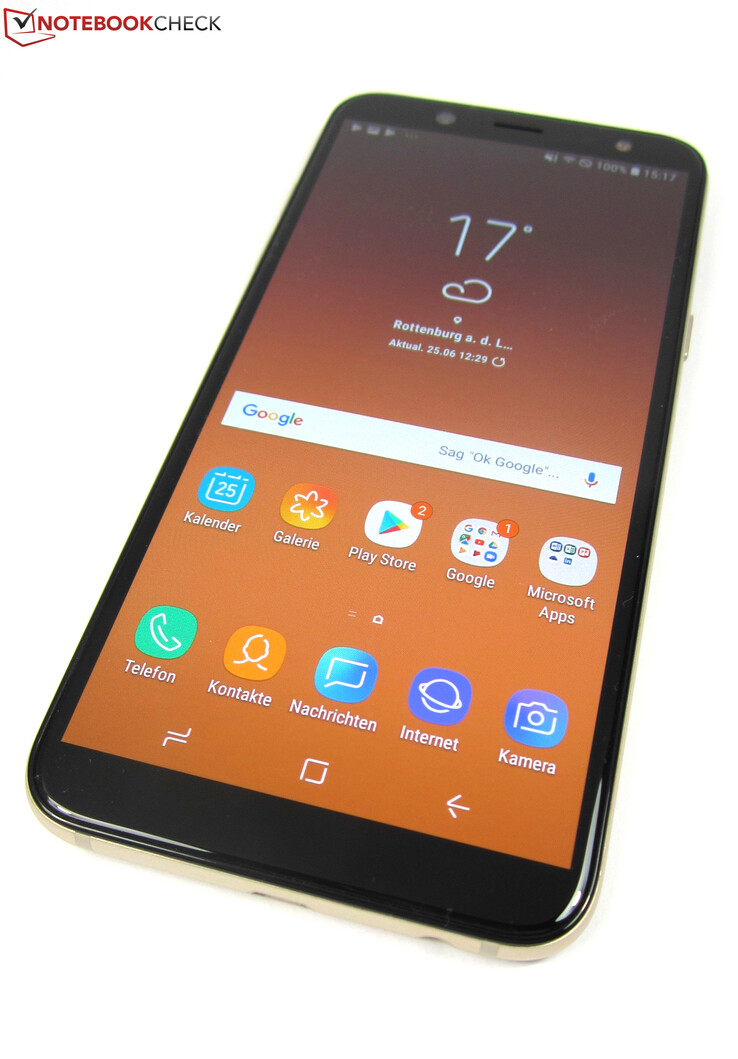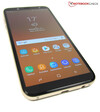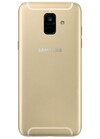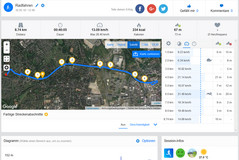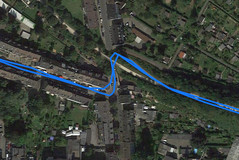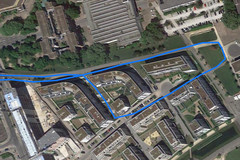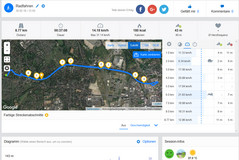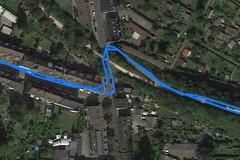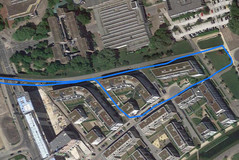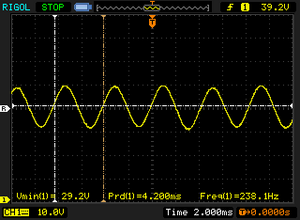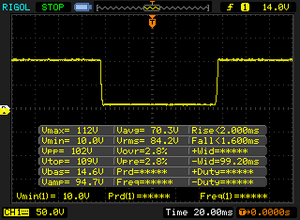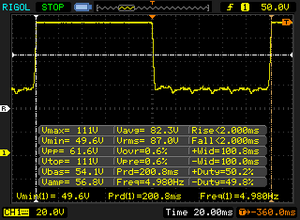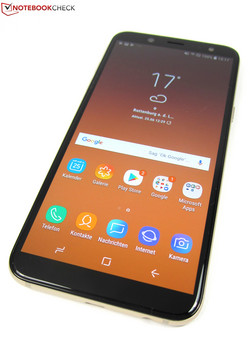Test: Samsung Galaxy A6 (2018) Smartphone (Sammanfattning)
Topp 10...
» Topp 10: Bästa bärbara allround/multimediadatorerna
» Topp 10: Bästa bärbara speldatorerna
» Topp 10: Bärbara budget/kontorsdatorer
» Topp 10: Bästa bärbara kontors/premiumdatorerna
» Topp 10: Bärbara arbetsstationer
» Topp 10: De bästa små/kompakta bärbara datorerna
» Topp 10: Bästa ultrabooks
» Topp 10: Bästa hybriddatorerna
» Topp 10: Bästa surfplattorna
» Topp 10: Marknadens bästa smartphones
Size Comparison
| |||||||||||||||||||||||||
Distribution av ljusstyrkan: 93 %
Mitt på batteriet: 453 cd/m²
Kontrast: ∞:1 (Svärta: 0 cd/m²)
ΔE ColorChecker Calman: 2.6 | ∀{0.5-29.43 Ø4.78}
ΔE Greyscale Calman: 1.6 | ∀{0.09-98 Ø5}
95.5% sRGB (Calman 2D)
Gamma: 2.07
CCT: 6356 K
| Samsung Galaxy A6 2018 Super AMOLED, 1480x720, 5.6" | Samsung Galaxy A5 2017 Super AMOLED, 1920x1080, 5.2" | Samsung Galaxy J7 2017 Super AMOLED, 1920x1080, 5.5" | BQ Aquaris X Pro IPS, 1920x1080, 5.2" | Motorola Moto G6 Plus IPS, 2160x1080, 5.9" | Xiaomi Redmi 5 Plus IPS, 2160x1080, 6" | |
|---|---|---|---|---|---|---|
| Screen | 26% | 9% | -131% | 27% | -15% | |
| Brightness middle (cd/m²) | 453 | 539 19% | 454 0% | 458 1% | 761 68% | 620 37% |
| Brightness (cd/m²) | 459 | 542 18% | 463 1% | 473 3% | 723 58% | 612 33% |
| Brightness Distribution (%) | 93 | 93 0% | 86 -8% | 88 -5% | 90 -3% | 96 3% |
| Black Level * (cd/m²) | 0.51 | 0.69 | 0.57 | |||
| Colorchecker dE 2000 * | 2.6 | 1.6 38% | 2 23% | 7.1 -173% | 2.4 8% | 3.46 -33% |
| Colorchecker dE 2000 max. * | 9.2 | 2.6 72% | 5.3 42% | 14.5 -58% | 5.2 43% | 7.88 14% |
| Greyscale dE 2000 * | 1.6 | 1.5 6% | 1.7 -6% | 10.5 -556% | 1.8 -13% | 3.9 -144% |
| Gamma | 2.07 106% | 2.28 96% | 2.1 105% | 2.28 96% | 2.21 100% | 2.073 106% |
| CCT | 6356 102% | 6422 101% | 6394 102% | 8951 73% | 6312 103% | 7230 90% |
| Contrast (:1) | 898 | 1103 | 1088 |
* ... mindre är bättre
Skärmflimmer / PWM (Puls-Width Modulation)
| Skärmflimmer / PWM upptäckt | 238.1 Hz | ||
Displayens bakgrundsbelysning flimrar vid 238.1 Hz (i värsta fall, t.ex. med PWM) . Frekvensen för 238.1 Hz är relativt låg, så känsliga användare kommer sannolikt att märka flimmer och uppleva ansträngda ögon vid den angivna ljusstyrkeinställningen och nedan. Som jämförelse: 53 % av alla testade enheter använder inte PWM för att dämpa skärmen. Om PWM upptäcktes mättes ett medelvärde av 8101 (minst: 5 - maximum: 343500) Hz. | |||
Visa svarstider
| ↔ Svarstid svart till vitt | ||
|---|---|---|
| 3.6 ms ... stiga ↗ och falla ↘ kombinerat | ↗ 2 ms stiga | |
| ↘ 1.6 ms hösten | ||
| Skärmen visar väldigt snabba svarsfrekvenser i våra tester och borde vara mycket väl lämpad för fartfyllt spel. I jämförelse sträcker sig alla testade enheter från 0.1 (minst) till 240 (maximalt) ms. » 14 % av alla enheter är bättre. Det betyder att den uppmätta svarstiden är bättre än genomsnittet av alla testade enheter (20.2 ms). | ||
| ↔ Svarstid 50 % grått till 80 % grått | ||
| 4 ms ... stiga ↗ och falla ↘ kombinerat | ↗ 2 ms stiga | |
| ↘ 2 ms hösten | ||
| Skärmen visar väldigt snabba svarsfrekvenser i våra tester och borde vara mycket väl lämpad för fartfyllt spel. I jämförelse sträcker sig alla testade enheter från 0.165 (minst) till 636 (maximalt) ms. » 14 % av alla enheter är bättre. Det betyder att den uppmätta svarstiden är bättre än genomsnittet av alla testade enheter (31.6 ms). | ||
| JetStream 1.1 - Total Score | |
| Samsung Galaxy A5 2017 (Samsung Browser (Chrome 44)) | |
| Motorola Moto G6 Plus (Chrome 66) | |
| BQ Aquaris X Pro (Chrome 59.0.3071.125) | |
| Samsung Galaxy J7 2017 (Samsung Browser 5.4) | |
| Genomsnitt Samsung Exynos 7870 Octa (20.8 - 26.4, n=8) | |
| Xiaomi Redmi 5 Plus (Chrome 66) | |
| Samsung Galaxy A6 2018 (Chrome 64.0.3282.137) | |
| Octane V2 - Total Score | |
| Genomsnitt av klass Smartphone (2228 - 121337, n=197, senaste 2 åren) | |
| Samsung Galaxy A5 2017 (Samsung Browser (Chrome 44)) | |
| Motorola Moto G6 Plus (Chrome 66) | |
| Samsung Galaxy J7 2017 (Samsung Browser 5.4) | |
| BQ Aquaris X Pro (Chrome 59.0.3071.125) | |
| Xiaomi Redmi 5 Plus (Chrome 66) | |
| Genomsnitt Samsung Exynos 7870 Octa (3721 - 4968, n=8) | |
| Samsung Galaxy A6 2018 (Chrome 64.0.3282.137) | |
| Mozilla Kraken 1.1 - Total | |
| Samsung Galaxy A6 2018 (Chrome 64.0.3282.137) | |
| Xiaomi Redmi 5 Plus (Chrome 66) | |
| Motorola Moto G6 Plus (Chrome 66) | |
| Genomsnitt Samsung Exynos 7870 Octa (6784 - 11916, n=8) | |
| BQ Aquaris X Pro (Chrome 59.0.3071.125) | |
| Samsung Galaxy J7 2017 (Samsung Browser 5.4) | |
| Samsung Galaxy A5 2017 (Samsung Browser (Chrome 44)) | |
| Genomsnitt av klass Smartphone (257 - 28190, n=154, senaste 2 åren) | |
| WebXPRT 2015 - Overall | |
| Xiaomi Redmi 5 Plus (Chrome 66) | |
| Motorola Moto G6 Plus (Chrome 66) | |
| Samsung Galaxy A5 2017 (Samsung Browser (Chrome 44)) | |
| Samsung Galaxy A6 2018 (Chrome 64.0.3282.137) | |
| BQ Aquaris X Pro (Chrome 59.0.3071.125) | |
| Samsung Galaxy J7 2017 (Samsung Browser 5.4) | |
| Genomsnitt Samsung Exynos 7870 Octa (64 - 91, n=8) | |
* ... mindre är bättre
| Samsung Galaxy A6 2018 | Samsung Galaxy A5 2017 | Samsung Galaxy J7 2017 | BQ Aquaris X Pro | Motorola Moto G6 Plus | Xiaomi Redmi 5 Plus | Genomsnitt 32 GB eMMC Flash | Genomsnitt av klass Smartphone | |
|---|---|---|---|---|---|---|---|---|
| AndroBench 3-5 | -9% | -10% | 18% | 130% | 51% | 28% | 1723% | |
| Sequential Read 256KB (MB/s) | 208.4 | 182 -13% | 198.5 -5% | 270.5 30% | 286.6 38% | 270 30% | 242 ? 16% | 2228 ? 969% |
| Sequential Write 256KB (MB/s) | 100.6 | 77.1 -23% | 53 -47% | 139.6 39% | 216.1 115% | 194.5 93% | 100.5 ? 0% | 1852 ? 1741% |
| Random Read 4KB (MB/s) | 24.54 | 22.41 -9% | 25.86 5% | 37.97 55% | 58.4 138% | 79.5 224% | 43.1 ? 76% | 296 ? 1106% |
| Random Write 4KB (MB/s) | 10.68 | 12.13 14% | 10.54 -1% | 12.07 13% | 62.8 488% | 7.1 -34% | 22.3 ? 109% | 339 ? 3074% |
| Sequential Read 256KB SDCard (MB/s) | 81.4 ? | 73.7 ? -9% | 76.1 ? -7% | 78.7 ? -3% | 83.7 ? 3% | 84.4 4% | 71.8 ? -12% | |
| Sequential Write 256KB SDCard (MB/s) | 65.7 ? | 56 ? -15% | 63.9 ? -3% | 49.77 ? -24% | 62.1 ? -5% | 59.5 -9% | 52.9 ? -19% |
| Arena of Valor | |||
| Inställningar | Värde | ||
| high HD | 26 fps | ||
| PUBG Mobile | |||
| Inställningar | Värde | ||
| Balanced | 13 fps | ||
(+) Den maximala temperaturen på ovansidan är 29.3 °C / 85 F, jämfört med genomsnittet av 35.2 °C / 95 F , allt från 21.9 till 247 °C för klassen Smartphone.
(+) Botten värms upp till maximalt 28.2 °C / 83 F, jämfört med genomsnittet av 34 °C / 93 F
(+) Vid tomgångsbruk är medeltemperaturen för ovansidan 25.6 °C / 78 F, jämfört med enhetsgenomsnittet på 32.9 °C / ### class_avg_f### F.
Samsung Galaxy A6 2018 ljudanalys
(+) | högtalare kan spela relativt högt (87 dB)
Bas 100 - 315 Hz
(-) | nästan ingen bas - i genomsnitt 26.5% lägre än medianen
(±) | linjäriteten för basen är genomsnittlig (7.6% delta till föregående frekvens)
Mellan 400 - 2000 Hz
(+) | balanserad mellan - endast 2.8% från medianen
(+) | mids är linjära (5.5% delta till föregående frekvens)
Högsta 2 - 16 kHz
(+) | balanserade toppar - endast 3.5% från medianen
(+) | toppar är linjära (6.2% delta till föregående frekvens)
Totalt 100 - 16 000 Hz
(±) | linjäriteten för det totala ljudet är genomsnittlig (17.4% skillnad mot median)
Jämfört med samma klass
» 12% av alla testade enheter i den här klassen var bättre, 8% liknande, 80% sämre
» Den bästa hade ett delta på 11%, genomsnittet var 35%, sämst var 134%
Jämfört med alla testade enheter
» 32% av alla testade enheter var bättre, 8% liknande, 59% sämre
» Den bästa hade ett delta på 4%, genomsnittet var 24%, sämst var 134%
Samsung Galaxy A5 2017 ljudanalys
(+) | högtalare kan spela relativt högt (83 dB)
Bas 100 - 315 Hz
(-) | nästan ingen bas - i genomsnitt 15.5% lägre än medianen
(±) | linjäriteten för basen är genomsnittlig (9.1% delta till föregående frekvens)
Mellan 400 - 2000 Hz
(±) | högre mellan - i genomsnitt 9.4% högre än median
(±) | linjäriteten för mids är genomsnittlig (7.6% delta till föregående frekvens)
Högsta 2 - 16 kHz
(±) | högre toppar - i genomsnitt 5% högre än medianen
(±) | linjäriteten för toppar är genomsnittlig (7.6% delta till föregående frekvens)
Totalt 100 - 16 000 Hz
(±) | linjäriteten för det totala ljudet är genomsnittlig (23.6% skillnad mot median)
Jämfört med samma klass
» 53% av alla testade enheter i den här klassen var bättre, 8% liknande, 39% sämre
» Den bästa hade ett delta på 11%, genomsnittet var 35%, sämst var 134%
Jämfört med alla testade enheter
» 70% av alla testade enheter var bättre, 6% liknande, 24% sämre
» Den bästa hade ett delta på 4%, genomsnittet var 24%, sämst var 134%
Xiaomi Redmi 5 Plus ljudanalys
(+) | högtalare kan spela relativt högt (86.9 dB)
Bas 100 - 315 Hz
(-) | nästan ingen bas - i genomsnitt 27.3% lägre än medianen
(±) | linjäriteten för basen är genomsnittlig (11.2% delta till föregående frekvens)
Mellan 400 - 2000 Hz
(+) | balanserad mellan - endast 3.4% från medianen
(+) | mids är linjära (3.8% delta till föregående frekvens)
Högsta 2 - 16 kHz
(+) | balanserade toppar - endast 4.5% från medianen
(+) | toppar är linjära (4.8% delta till föregående frekvens)
Totalt 100 - 16 000 Hz
(±) | linjäriteten för det totala ljudet är genomsnittlig (19.8% skillnad mot median)
Jämfört med samma klass
» 31% av alla testade enheter i den här klassen var bättre, 8% liknande, 61% sämre
» Den bästa hade ett delta på 11%, genomsnittet var 35%, sämst var 134%
Jämfört med alla testade enheter
» 50% av alla testade enheter var bättre, 7% liknande, 43% sämre
» Den bästa hade ett delta på 4%, genomsnittet var 24%, sämst var 134%
| Av/Standby | |
| Låg belastning | |
| Hög belastning |
|
Förklaring:
min: | |
| Samsung Galaxy A6 2018 3000 mAh | Samsung Galaxy A5 2017 3000 mAh | Samsung Galaxy J7 2017 3600 mAh | BQ Aquaris X Pro 3100 mAh | Motorola Moto G6 Plus 3200 mAh | Xiaomi Redmi 5 Plus 4000 mAh | Genomsnitt Samsung Exynos 7870 Octa | Genomsnitt av klass Smartphone | |
|---|---|---|---|---|---|---|---|---|
| Power Consumption | 8% | 31% | -28% | -13% | -73% | -18% | -64% | |
| Idle Minimum * (Watt) | 0.81 | 0.64 21% | 0.39 52% | 0.67 17% | 0.5 38% | 0.7 14% | 0.71 ? 12% | 0.842 ? -4% |
| Idle Average * (Watt) | 1.26 | 1.36 -8% | 1.06 16% | 1.7 -35% | 1.78 -41% | 2.8 -122% | 1.909 ? -52% | 1.439 ? -14% |
| Idle Maximum * (Watt) | 1.3 | 1.4 -8% | 1.08 17% | 1.78 -37% | 1.81 -39% | 3.4 -162% | 1.995 ? -53% | 1.624 ? -25% |
| Load Average * (Watt) | 2.87 | 2.53 12% | 1.82 37% | 4.42 -54% | 3.3 -15% | 4.2 -46% | 3.02 ? -5% | 7.03 ? -145% |
| Load Maximum * (Watt) | 4.82 | 3.63 25% | 3.21 33% | 6.3 -31% | 5.14 -7% | 7.2 -49% | 4.42 ? 8% | 11.3 ? -134% |
* ... mindre är bättre
| Samsung Galaxy A6 2018 3000 mAh | Samsung Galaxy A5 2017 3000 mAh | Samsung Galaxy J7 2017 3600 mAh | BQ Aquaris X Pro 3100 mAh | Motorola Moto G6 Plus 3200 mAh | Xiaomi Redmi 5 Plus 4000 mAh | |
|---|---|---|---|---|---|---|
| Batteridrifttid | 40% | 43% | -2% | 7% | -18% | |
| Reader / Idle (h) | 26.9 | 40.3 50% | 32.5 21% | 30.7 14% | 30.8 14% | |
| H.264 (h) | 14.5 | 16.4 13% | 18.3 26% | 10.7 -26% | 9 -38% | |
| WiFi v1.3 (h) | 10.1 | 14.1 40% | 15.1 50% | 12.2 21% | 11.7 16% | 8.3 -18% |
| Load (h) | 5 | 7.8 56% | 8.8 76% | 4.2 -16% | 6.7 34% |
För
Emot
Läs den fullständiga versionen av den här recensionen på engelska här.
Samsung erbjuder en bra mittenskikts-smartphone med sin Galaxy A6 (2018), som får tävla mot kapabla konkurrenter. Den har ett flertal fördelar men också precis lika många nackdelar.
Samsung Galaxy A6 (2018) är en bra mittenskikts-smartphone som presterar sämre än sin föregångare Samsung Galaxy A5 (2017) på ett antal områden.
Galaxy A6 (2018) får många poäng för sin utmärkta design, ljusstarka och välkalibrerade skärm och långa batteritid. Den har också uppdaterad Android (8.0 Oreo), riktig Dual SIM-funktionalitet samt utökningsbar lagring (den interna lagringen kan utökas med ett microSD-kort). Kameramodulen presterar inte särskilt bra: Huvudkameran på 16 MP producerar "okej" foton i dagsljus men får kämpa i situationer med lite ljus.
Galaxy A6 (2018) för ca 3000 kronor har en del brister. MicroUSB-porten är kraftigt utdaterad. Andra nackdelar inkluderar: Långsam WiFi, avsaknad av IP-certifiering och att den tar lång tid att ladda. Med sin Exynos 7870 SoC och ARM Mali T830 MP2-grafikenhet så har Galaxy A6 (2018) mer än tillräckligt med prestanda för vardagsanvändning. Men den är inte i närheten av tillräckligt kraftfull för spel. Totalt sett är föregångaren Samsung Galaxy A5 (2017) ett bättre val, om du inte behöver stöd för Dual-SIM. Den har bättre prestanda till ett lägre pris.
Samsung Galaxy A6 2018
- 06/28/2018 v6 (old)
Manuel Masiero




